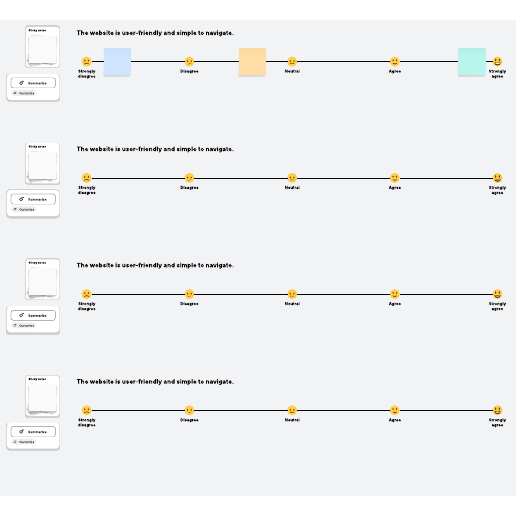5 E's customer journey
This template works on the following products:
*For all Lucid plan types

Understanding your customer's feelings and interactions with your product is key to improving customer experience and driving retention. Use this 5E's customer journey map to explore customer experiences along the following five stages: Entice, Enter, Engage, Exit, and Extend.
What is the 5 E’s customer journey framework?
Making general assumptions about your customers is often a necessity, but without looking at the more granular steps of their journey, it’s difficult to understand their motivations and needs. The 5E framework is a type of customer journey map that helps develop a deeper understanding of how people are experiencing your product or service. When you’re able to empathize with your customers, you’ll be able to develop a product or experience they genuinely want.
Why use the 5 E’s customer journey model
If you’re looking for a straightforward, easy-to-use customer journey map, the 5 E’s is a great place to start. Use the 5E framework to:
- Improve. After filling in the template, you’ll likely notice opportunities for improvement in your customer’s journey. For instance, maybe they enter your website through a data collection form that’s only optimized for a desktop. Optimizing for a mobile device could be a great opportunity.
- Guide. The 5 E’s model guides you through pivotal steps in the customer process. It takes the guesswork out of the steps you should be analyzing and helps you visualize any highs, lows, or gaps in the customer journey.
- Understand. When you empathize with your customers, you’ll be able to speak their language. They’ll be more open to your product if they feel understood.
How to use the 5 E’s customer journey template in Lucidspark
Share this template with your team and collaborate on it in real time or asynchronously. Use collaborator colors and emojis as you work through each section of the template:
- Entice: How are your customers lured into this experience? Why are they hearing about your product? What catches their eye and interest?
- Enter: Where does this product or experience actually start? How are your customers interacting here?
- Engage: What does the customer actually do after they enter?
- Exit: What signals the completion of the journey? How does the customer exit the experience?
- Extend: Are there follow-up actions? Emails, notifications, or something else that keeps the customer engaged?
Once you’ve filled out the template, identify opportunities for improving the customer experience. You may turn these into an additional brainstorm or make a plan to follow through on your discoveries. Be sure to share the journey framework with any other stakeholders for feedback and additional insight.



